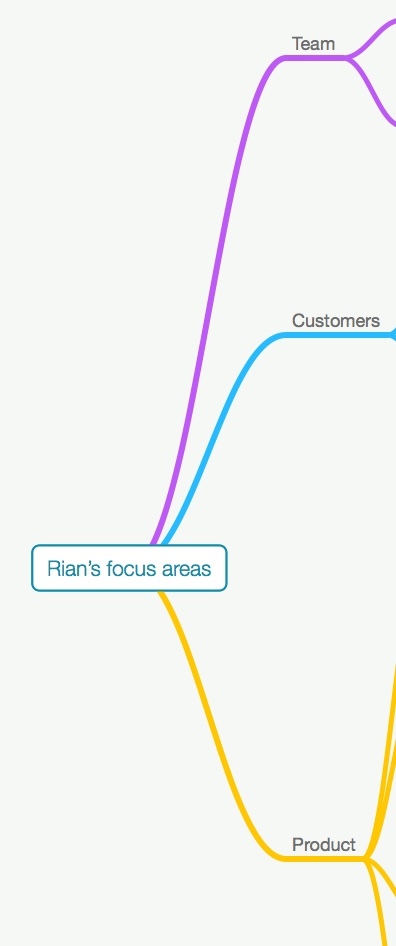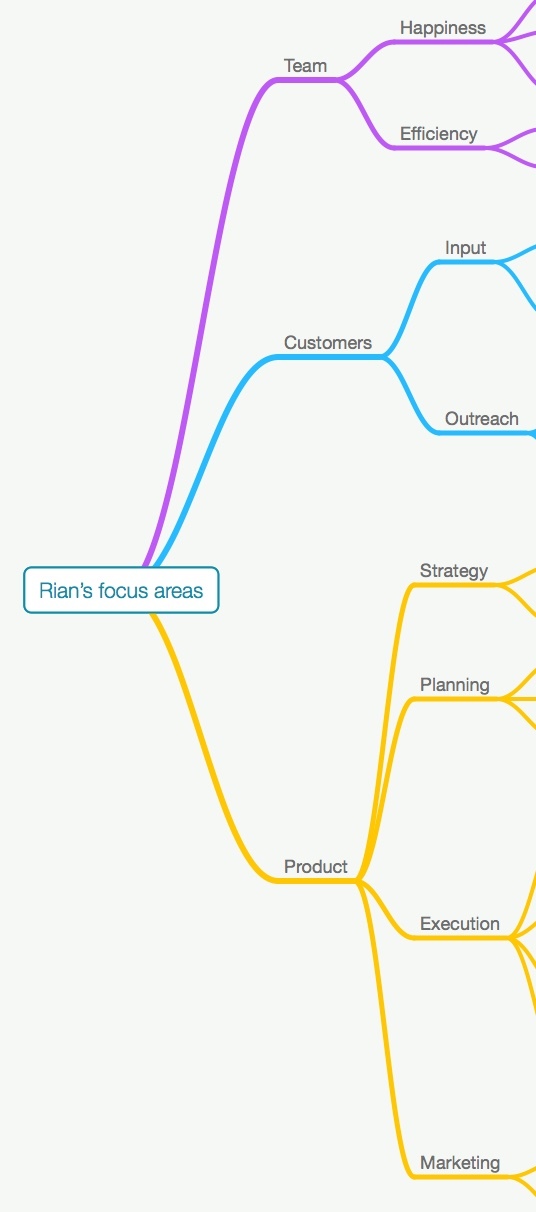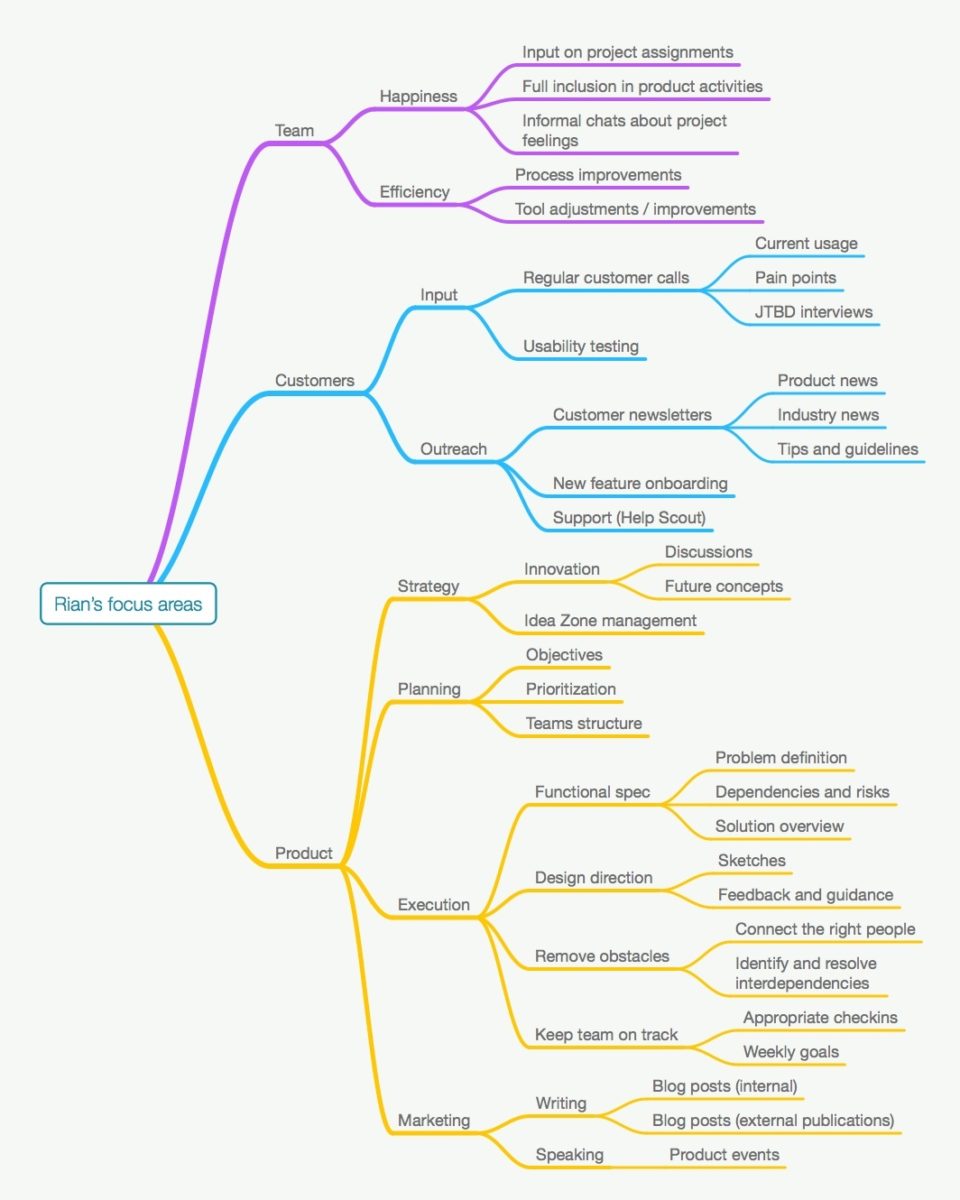In preparation for our 32-hour work weeks, I’ve been working with some folks on our team to help them more clearly define their roles. To achieve the same amount of work in less time, we have to make sure that we’re all working on the right things and that everyone is clear on their part in our combined success.
I’ve been using a process that we developed when Chris and I were trying to define our own roles. This really helps people in roles where the job is multi-faceted, like a Product Manager, a lead, etc. The end result we’re looking for is a clearly defined set of tasks and goals for each person on your team. Meaning, when hit a fork in the road, everyone knows which road to take because it was clearly defined ahead of time.
One of the biggest challenges is that job descriptions are really vague, and don’t help someone clearly identify what work they need to do—like actual tasks they are expected to accomplish. And even if you’ve defined it clearly, roles change as the needs of a business change. So this process is useful when someone just joins, or a few times a year as you start to feel priorities or focus shifting.
The first step is to start by drawing out a mindmap of the role, how it currently looks and how we want it to look. I got this idea from an advisor when he was helping other CEOs define what they do all day. The goal is to fill in this sentence:
My job is a _______. I focus on _______, _______, and _______. I do this by _______, _______ and, _______. Daily, these are the tasks that make up my job: _____.
As an example, I’ll work through the mind map for a product manager on our team.
Start with big bubbles of your role definition. Stuff that’s more general: Team, Customers and Product. These are big general parts to the PM role, but they leave a lot of obscurity and don’t really include any details or prioritization on what to work on.

From here, start specifying what the responsibilities are in each of those roles. Like happiness and efficiency of the team, input and outreach for customers, strategy, planning, execution and marketing for the product. Now we’re seeing a role really start to take shape. These are specific areas that we want to focus on, ways in which we accomplish the main part of the role.

From there, you branch into specifics. These are specific actions and tasks that we want to take. As you can see in our example, they can be a few levels deep if it makes it easier. Things like speaking and writing, sending newsletters, doing usability testing. These are tasks you’re doing now, or want to be doing to fulfill the broader task. It’s useful to write them all down, even ones you may not want to do now. You can always cross them off later.

You want to end up with the following sentence: My job is a product manager. I focus on my team, our product, and our customers. I do this by making sure that my team is happy and productive, that I am constantly in tune with our customers and that the product is the best that it can be. Daily, this is what my job looks like.
Now that the map is finished, you can start to see the breadth of the role and the specific tasks it takes to accomplish it. But what this doesn’t do yet is help you to prioritize what to work on now, or in the near future. You can see from this map, there is a TON of work that can be done. More than one person could accomplish. So we have to go to work to prioritize. For this we like to use a simple 30-60-90 day plan.
We decide together what’s important now. Is there an area we want to focus more or less attention on to achieve our goals as they currently stand. For example, maybe right now we’re focused heavily on engaging with our customers, so the PM shifts priorities to be 50% on customers, and 25% on product and team.
With a 30-60-90 plan, you see a clear goal and clear objectives. So now, when we’re working less, we know our priorities and where to focus our limited time. Obviously, things change and evolve. Usually 90 days out is just long enough where things don’t change dramatically, but we can always get together to adjust if needed.
I am currently working through this excercise with several people on our team. It has the added benefit of bringing clarity to me as manager. I know what we’ve all agreed to work on and focus on. I know what questions to ask, and what roadblocks I need to remove to help my team accomplish what we agreed to. It makes leading a team a lot easier when the homework and planning is done ahead of time. I’m confident that everyone knows what needs to get done, and I’m never worried we’re working on the wrong thing or losing any time.

